TNPSC Books
-
TNPSC பொதுத் தமிழ் Book - for Group 2, 2A, 3, 4 & VAO
₹1,000.00Original price was: ₹1,000.00.₹850.00Current price is: ₹850.00. -
TNPSC General English Book - for Group 2 & 2A
Rated 5.00 out of 5₹1,000.00Original price was: ₹1,000.00.₹850.00Current price is: ₹850.00.
Group 1 Courses
TNPSC Group 1 - Test Series - 2019
4.7₹3,500.00Original price was: ₹3,500.00.₹2,800.00Current price is: ₹2,800.00. 542Group 1 | Postal and Online Test Series | 2022
₹3,200.00Original price was: ₹3,200.00.₹2,800.00Current price is: ₹2,800.00. 88
Group 2 & 2A Courses
TNPSC Group 2 and 2A - Test Series - 2019 - தமிழ்
₹2,400.00Original price was: ₹2,400.00.₹1,800.00Current price is: ₹1,800.00. 175TNPSC Group 2 and 2A - Test Series - 2019
₹2,400.00Original price was: ₹2,400.00.₹1,800.00Current price is: ₹1,800.00. 527
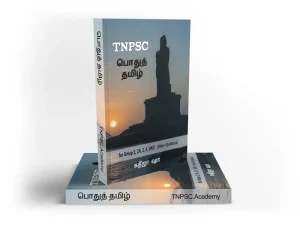
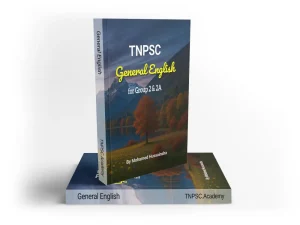




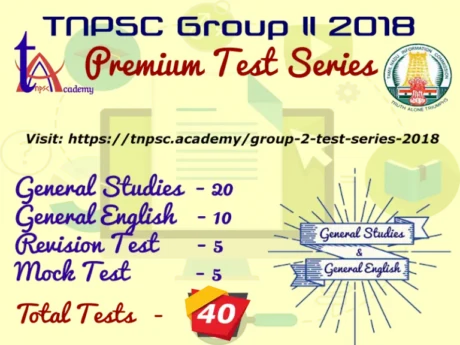
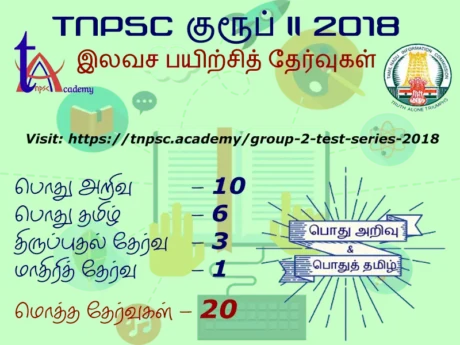
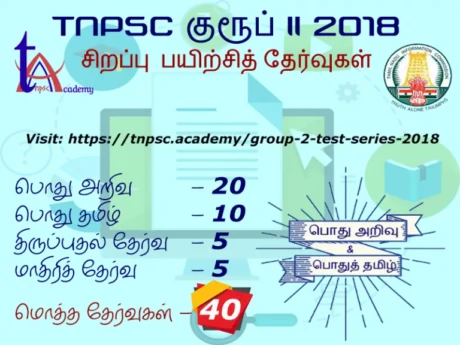





www.tnpsc.academy – TNPSC Current Affairs September 03, 2020 (03/09/2020)
Topic: Political System in India
Question Hour and Zero Hour
Recently, the Central government has decided to suspend the Question Hour and curtail Zero Hour for Monsoon Session. This has been done in view of the Covid-19 pandemic.
In the past too, the Question Hour has been suspended. However, they were suspended during national emergencies. The current suspension has been done during a regular session.
Question Hour:
The first hour of every parliamentary sitting is slotted for the Question Hour. However, in 2014 the Question Hour was shifted in the Rajya Sabha from 11 am to 12 noon. During this one hour, Members of Parliament (MPs) ask questions to ministers and hold them accountable for the functioning of their ministries.
The questions can also be asked to the private members (MPs who are not ministers).
Regulation: It is regulated according to parliamentary rules.
The presiding officers of the both Houses (Rajya Sabha and Lok Sabha) are the final authority with respect to the conduct of Question Hour.
Kinds of Questions: There are three types of questions asked.
Starred question (distinguished by an asterisk)- this requires an oral answer and hence supplementary questions can follow.
Unstarred question- this requires a written answer and hence, supplementary questions cannot follow.
Short notice question is one that is asked by giving a notice of less than ten days. It is answered orally.
Frequency: Question Hour in both Houses is held on all days of the session. But there are two days when an exception is made. When the President addresses MPs from both Houses. The President’s speech takes place at the beginning of a new Lok Sabha and on the first day of a new Parliament year. On the day the Finance Minister presents the Budget.
Zero Hour:
Zero Hour is an Indian parliamentary innovation. It is not mentioned in the parliamentary rules book. Under this, MPs can raise matters without any prior notice. The zero hour starts immediately after the question hour and lasts until the agenda for the day (i.e. regular business of the House) is taken up.
In other words, the time gap between the question hour and the agenda is known as zero hour.
_
Topic: International Relations
Postal Voting in the USA
Many states in the USA are making postal voting options more easily accessible, as the USA presidential election is set to take place in November 2020 amid the Covid-19 pandemic.
Election in USA:
In the USA, all elections–federal, state, and local– are directly organised by the governments of individual states. Unlike India, there is no Election Commission independent of the government in the USA to conduct elections at the national (federal) level.
The USA Constitution and laws grant the states wide latitude in how they administer elections, this has resulted in varying rules across the country.
Every single state allows postal voting, but they have different rules for this. In some states voters are provided absentee ballots if they provide an excuse as to why they cannot be present in person on election day.
Issues involved:
Mr. Trump and his supporters allege that the expansion of postal voting in the November 2020 elections will lead to malpractices. However, Democrats and a section of the Republicans disagree with Mr. Trump, saying he is deliberately disrupting the postal voting.
_
Topic: New inventions on Science & Technology
Covid-19 Detection Using Mass Spectrometer
Researchers from the Institute of Genomics and Integrative Biology (IGIB) and the National Centre for Disease Control (NCDC) have developed a technique that uses mass spectrometry to detect novel coronavirus (SARS-CoV-2).
IGIB is a premier institute of Council of Scientific and Industrial Research (CSIR), engaged in research of national importance in the areas of genomics, molecular medicine, bioinformatics, etc. It is based in New Delhi.
NCDC is under administrative control of the Directorate General of Health Services in the Union Ministry of Health and Family Welfare.
Mass Spectrometry (MS):
It is an analytical technique used for determining the elemental composition of samples, quantifying the mass of particles and molecules, and elucidating their chemical structure.
MS is based on ionization and fragmentation of sample molecules in the gaseous phase.
The instruments used in this technique are called mass spectrometers and mass spectrographs, and they operate on the principle that moving ions may be deflected by electric and magnetic fields.
Clinical laboratories use the MS technology for disease screening, diagnosis of disease and metabolic disorders, monitoring of drug therapy, identifying drug toxicity and poisoning, and discovering new biomarkers.
Biomarker is short for biological marker, and is used as an indication that a biological process in the body has happened or is ongoing.
Different Types of Test for Detecting Covid-19:
RT-PCR Tests
Rapid Antigen Detection Tests
RTnPCR Tests
Feluda Tests
ELISA Antibody Tests
SalivaDirect Test
_
Topic: Profile of States, General Administration
Jammu and Kashmir Official Languages Bill 2020
Recently, the Union Cabinet has approved the Jammu and Kashmir Official Languages Bill 2020 to be introduced in the monsoon session of Parliament.
Key facts:
The Bill will include Kashmiri, Dogri and Hindi as official languages in the newly-created Union Territory of Jammu and Kashmir.
Only English and Urdu were official languages in the former State, which was bifurcated on 5th August 2019, with Ladakh becoming a separate Union Territory.
Dogri along with Bodo, Maithili and Santhali was added to the scheduled languages under the Eighth Schedule by 92nd Amendment Act of 2003, which consists of the following 22 languages:
Assamese, Bengali, Gujarati, Hindi, Kannada, Kashmiri, Konkani, Malayalam, Manipuri, Marathi, Nepali, Oriya, Punjabi, Sanskrit, Sindhi, Tamil, Telugu, Urdu, Bodo, Santhali, Maithili and Dogri.
Of these languages, 14 were initially included in the Constitution.
Sindhi language was added by the 21st Amendment Act of 1967.
Konkani, Manipuri, and Nepali were included by the 71st Amendment Act of 1992.
The Bill not only fulfills a long-pending public demand of the region but also keeps with the spirit of equality.
Constitutional Provisions:
Part XVII of the Indian Constitution deals with the official languages in Articles 343 to 351.
Article 345: Official language or languages of a State subject to the provisions of Article 346 and 347.
The Constitutional provisions related to the Eighth Schedule are:
Article 344:
Article 344(1) provides for the constitution of a Commission by the President on expiration of five years from the commencement of the Constitution and thereafter at the expiration of ten years from such commencement, which shall consist of a Chairman and such other members representing the different languages specified in the Eighth Schedule to make recommendations to the President for the progressive use of Hindi for official purposes of the Union.
Article 351: It provides for the spread of the Hindi language to develop it so that it may serve as a medium of expression for all the elements of the composite culture of India.
_
Topic: Latest Diary of Events
Global Innovation Index 2020 released
13th edition of Global Innovation Index released. The index is a leading reference for measuring an economy’s innovation performance.
The GII is co-published by Cornell University, INSEAD, and the World Intellectual Property Organization (WIPO), a specialized agency of the United Nations.
How are countries ranked?
GII rankings are based on 80 indicators, from traditional measurements like research and development investments and international patent and trademark applications.
India’s performance:
This year, India climbed four spots and is now at 48th position in the list. India is at the top position among the nations in central and southern Asia.
India has now become the third most innovative lower middle-income economy in the world.
India ranks in the top 15 in indicators such as ICT (Information and Communication Technology) services exports, government online services, graduates in science and engineering, and R&D-intensive global companies.
Global scenario:
The rankings show stability at the top but a gradual “eastward shift in the locus of innovation” as Asian economies like China, India, the Philippines and Vietnam have advanced considerably in the innovation ranking over the years.
Top 5: Switzerland, Sweden, the US, the UK and the Netherlands lead the innovation ranking.